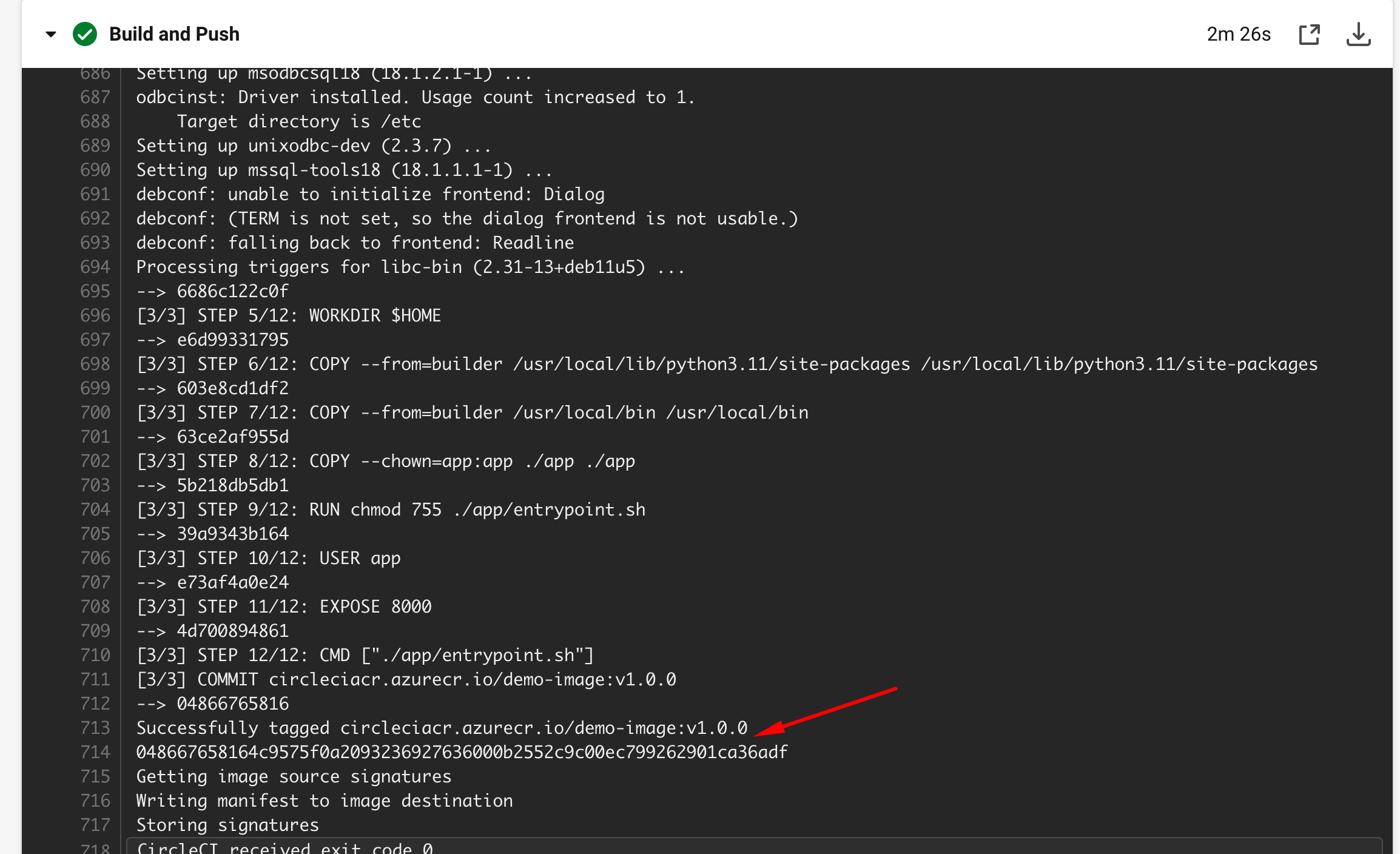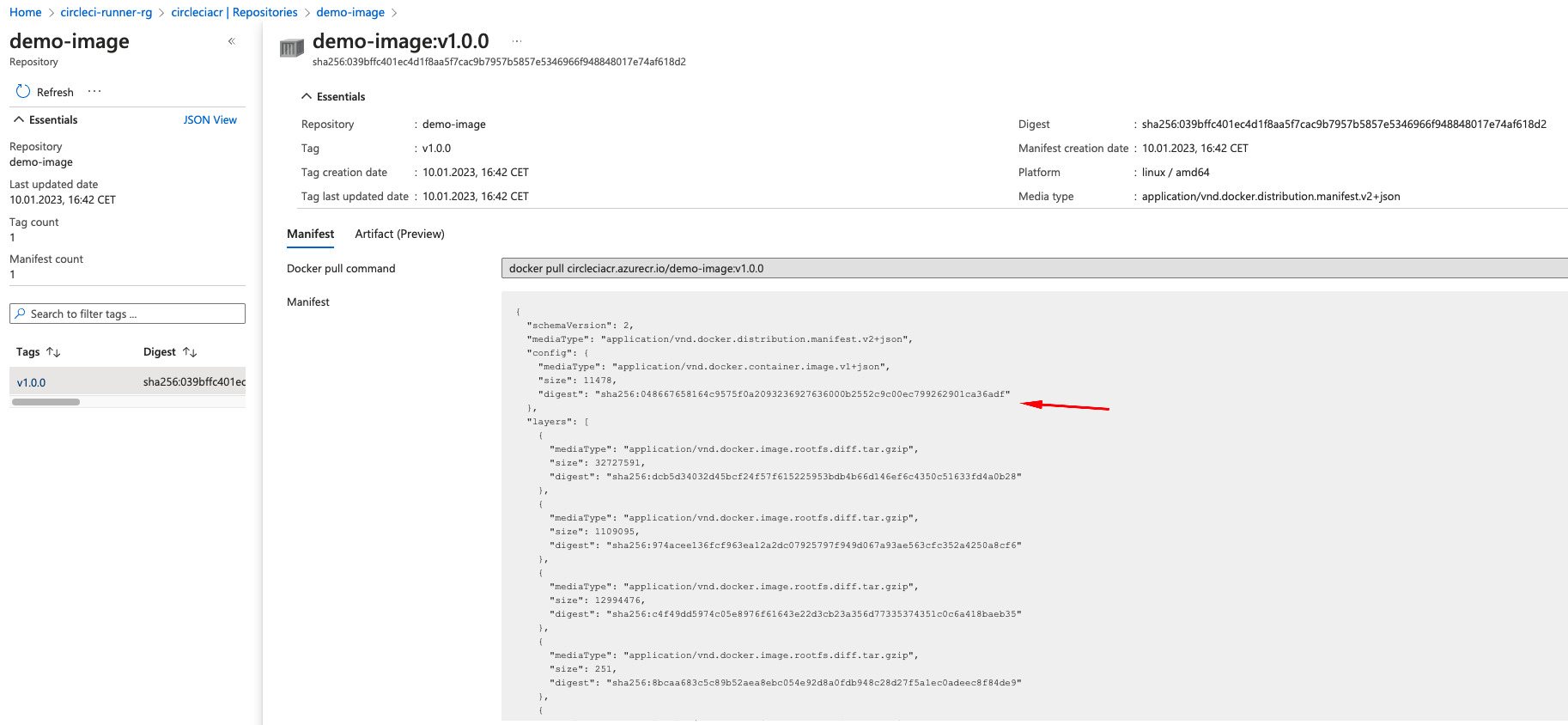We use self-hosted CI/CD when we want to run and manage our own continuous integration and delivery (CI/CD) pipeline, rather than using a cloud-based service like CircleCI, Azure DevOps, or GitHub Actions. One way to do this is to host the agents on a Kubernetes cluster, which can provide scalability and resource isolation for your build processes. By self-hosting our CI/CD agents on Kubernetes, we have greater control over the infrastructure and can customize the build process to fit our specific needs. However, it also requires more setup and maintenance effort on our part.
Overview
We will:
- Create AKS cluster with workload identity enabled. We touched on that topic in this post so please take the time to read it if you are not familiar with this setup.
- Create Azure Container Registry to store our images
- Create Persistent Volume Claim
- Create CircleCI Agent and simple config
Video walkthrough
Prerequisites
- Kubernetes 1.12+
- Helm 3.x
- Token for a resource class
- jq tool if you want to run all commands
- Dockerfile
Create an AKS cluster with workload identity
I created script with necessary commands to provision a basic setup. This is the same setup as in last post. Let’s run it.
1
2
chmod +x aks.sh
./aks.sh 'add user id, for me, it is my email of AAD user'
After running above script, if there were no errors, variables should be available in terminal. If you will have any problem running it, let me know and I will try to help. I use zsh terminal.
- Create a user-assigned managed identity for workload identity
1
clientId=$(az identity create --name $workloadIdentity --resource-group $resourceGroup --query clientId -o tsv)
- Grant permission to access the secret in Key Vault
1 2 3
az keyvault set-policy --name $kvName \ --secret-permissions get \ --spn $clientId
Create Azure Container Registry
We will create ACR and we will enable admin login. We will add these credentials to Key Vault. Later in this post, we will push an image to ACR using Buildah which does not work currently with Azure Managed Identity setup without Docker.
1
2
acrName='circleciacr'
acrId=$(az acr create --name $acrName --resource-group $resourceGroup --sku Basic --admin-enabled --query id -o tsv)
Get credentials for ACR and add them to Key Vault
1
2
3
4
5
6
7
8
ACRUSER=$(az acr credential show -n $acrName | jq -r .username)
ACRPASSWORD=$(az acr credential show -n $acrName | jq -r '.passwords | .[0].value')
az keyvault secret set --vault-name $kvName \
--name "ACRUSER" \
--value $ACRUSER
az keyvault secret set --vault-name $kvName \
--name "ACRPASSWORD" \
--value $ACRPASSWORD
Create SecretProviderClass
We need this object if we want to access Key Vault from AKS cluster.
Create file secretprovider.yaml and add missing variables and apply.
1
2
3
4
5
6
7
8
9
10
11
12
13
14
15
16
17
18
19
20
21
22
23
24
25
26
27
28
29
30
31
apiVersion: v1
kind: Namespace
metadata:
name: circleci
labels:
name: circleci
---
apiVersion: secrets-store.csi.x-k8s.io/v1
kind: SecretProviderClass
metadata:
name: aks-kv-workload-identity
namespace: circleci
spec:
provider: azure
parameters:
usePodIdentity: "false"
useVMManagedIdentity: "false"
clientID: # az identity show --name $workloadIdentity --resource-group $resourceGroup --query clientId -o tsv
keyvaultName: # echo $kvName
cloudName: ""
objects: |
array:
- |
objectName: ACRUSER
objectType: secret
objectVersion: ""
- |
objectName: ACRPASSWORD
objectType: secret
objectVersion: ""
tenantId: # az account show --query tenantId -o tsv
1
kubectl apply -f secretprovider.yaml
Create Service Account, Role and Rolebinding for CircleCI agent
Create file sa.yaml, add missing variable and apply.
1
2
3
4
5
6
7
8
9
10
11
12
13
14
15
16
17
18
19
20
21
22
23
24
25
26
27
28
29
30
31
32
33
34
35
36
37
38
39
40
41
42
apiVersion: v1
kind: ServiceAccount
metadata:
annotations:
azure.workload.identity/client-id: # az identity show --name $workloadIdentity --resource-group $resourceGroup --query clientId -o tsv
labels:
azure.workload.identity/use: "true"
name: circleci-sa
namespace: circleci
---
apiVersion: rbac.authorization.k8s.io/v1
kind: Role
metadata:
namespace: circleci
name: circleci-role
rules:
- apiGroups: [""]
resources: ["pods", "pods/exec"]
verbs: ["get", "watch", "list", "create", "delete"]
- apiGroups: [""]
resources: ["secrets"]
verbs: ["get", "list", "create", "delete"]
- apiGroups: [""]
resources: ["events"]
verbs: ["watch"]
- apiGroups: [""]
resources: ["nodes"]
verbs: ["get", "list"]
---
apiVersion: rbac.authorization.k8s.io/v1
kind: RoleBinding
metadata:
name: circleci-rolebinding
namespace: circleci
subjects:
- kind: ServiceAccount
name: circleci-sa
namespace: circleci
roleRef:
kind: Role
name: circleci-role
apiGroup: rbac.authorization.k8s.io
1
kubectl apply -f sa.yaml
Create federated identity credentials
1
2
3
4
5
6
az identity federated-credential create \
--name "aks-federated-credential" \
--identity-name $workloadIdentity \
--resource-group $resourceGroup \
--issuer "${oidcUrl}" \
--subject "system:serviceaccount:circleci:circleci-sa"
Setup CircleCI
Enable Self-Hosted Runners in CircleCI and create resource class. During that process You will optain access token. Follow documentation.
Create secret object with CircleCI token
1
kubectl -n circleci create secret generic circleci-token-secrets --from-literal=circleci-runner.resourceClass='ADD TOKEN'
Create Persistent Volume Claim
We will use storage class that is already created in AKS: azurefile-csi.
Create file pvc.yaml and apply.
1
2
3
4
5
6
7
8
9
10
11
12
apiVersion: v1
kind: PersistentVolumeClaim
metadata:
name: pvc-circleci
namespace: circleci
spec:
accessModes:
- ReadWriteMany
resources:
requests:
storage: 10Gi
storageClassName: azurefile-csi
1
kubectl apply -f pvc.yaml
Create CircleCI agent
Install fuse-overlay program according to documentation.
We will create custom values.yaml file.
1
2
3
4
5
6
7
8
9
10
11
12
13
14
15
16
17
18
19
20
21
22
23
24
25
26
27
28
29
30
31
32
33
34
agent:
customSecret: circleci-token-secrets
serviceAccount.create: false
rbac.create: false
resourceClasses:
circleci-runner/resourceClass:
metadata:
annotations:
custom.io: circleci-runner
spec:
serviceAccountName: circleci-sa
containers:
- resources:
limits:
github.com/fuse: 1
volumeMounts:
- name: agent-store
mountPath: /home/build/
- name: secrets-store
mountPath: "/mnt/secrets-store"
readOnly: true
securityContext:
privileged: true
runAsUser: 1000
volumes:
- name: agent-store
persistentVolumeClaim:
claimName: pvc-circleci
- name: secrets-store
csi:
driver: secrets-store.csi.k8s.io
readOnly: true
volumeAttributes:
secretProviderClass: "aks-kv-workload-identity"
Install agent with Helm.
1
helm install container-agent container-agent/container-agent --namespace circleci -f values.yaml
Confirm if deployment is created. 
Create config.yaml for CircleCI pipeline
1
2
3
4
5
6
7
8
9
10
11
12
13
14
15
16
17
18
19
20
version: 2.1
jobs:
build-push:
docker:
- image: quay.io/buildah/stable:v1.28.0
resource_class: azuretour/aksrunner
steps:
- checkout
- run:
name: Build and Push
command: |
ACRUSER=$(cat /mnt/secrets-store/ACRUSER)
ACRPASSWORD=$(cat /mnt/secrets-store/ACRPASSWORD)
buildah bud --format docker --layers -f ./Dockerfile -t circleciacr.azurecr.io/demo-image:v1.0.0 .
buildah push --creds=${ACRUSER}:${ACRPASSWORD} circleciacr.azurecr.io/demo-image:v1.0.0
workflows:
build-push-workflow:
jobs:
- build-push
Push our changes to the repository and check the job result.
Confirm that pod for circleci job is created.
Confirm that CircleCI job is complete.
Confirm that image is in ACR.
According to circleci documentation we can add `runAsNonRoot: true ` to `securityContext` but during my tests I was unable to mount fuse device plugin without --priviliged flag in AKS with default settings. We need to be able to modify pod that circle agent creates.
Error: mount /var/lib/containers/storage/overlay:/var/lib/containers/storage/overlay, flags: 0x1000: permission denied
Here are great articles from RedHat for further reading:
- https://www.redhat.com/sysadmin/building-buildah
- https://www.redhat.com/sysadmin/podman-inside-kubernetes
Conclusion
I would like to have more control over pod which is created by circleci-agent. This solution is not flexible enough for me yet and there are security concerns.





